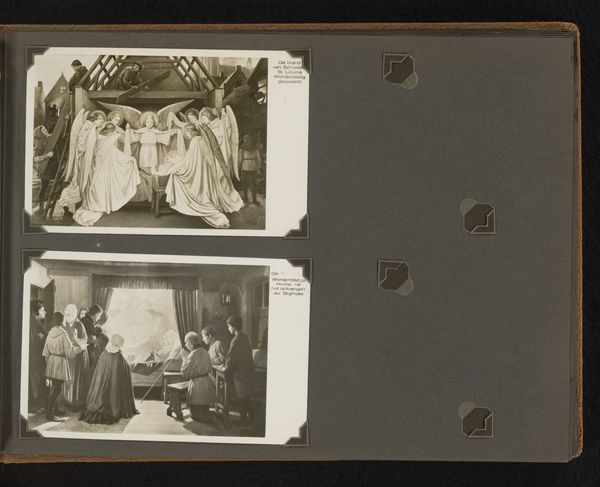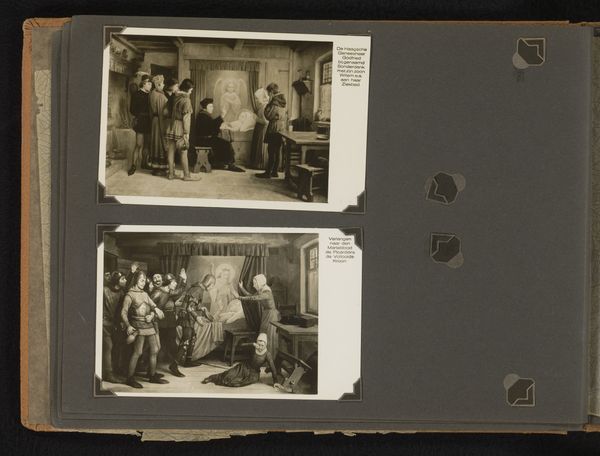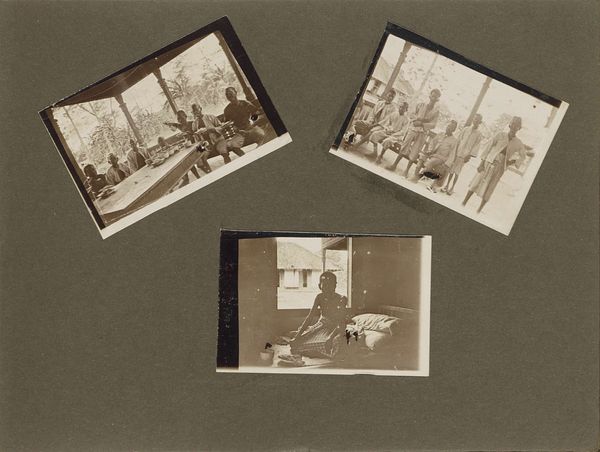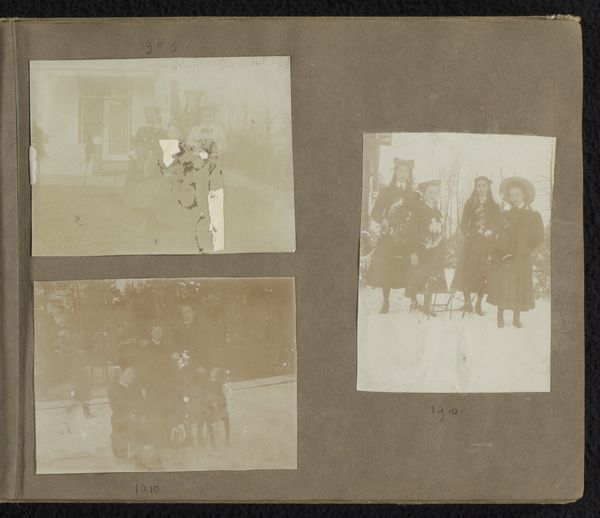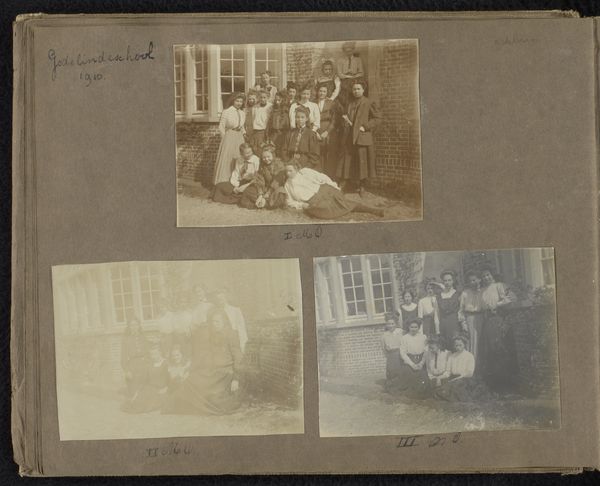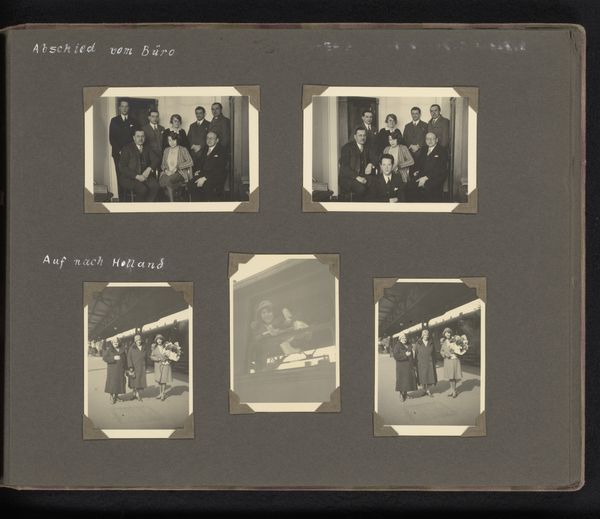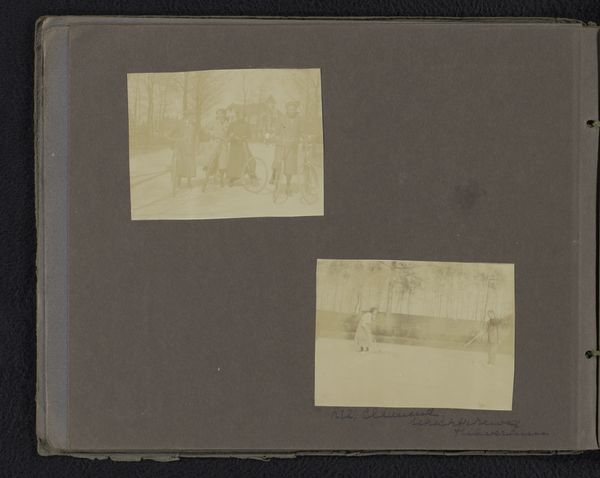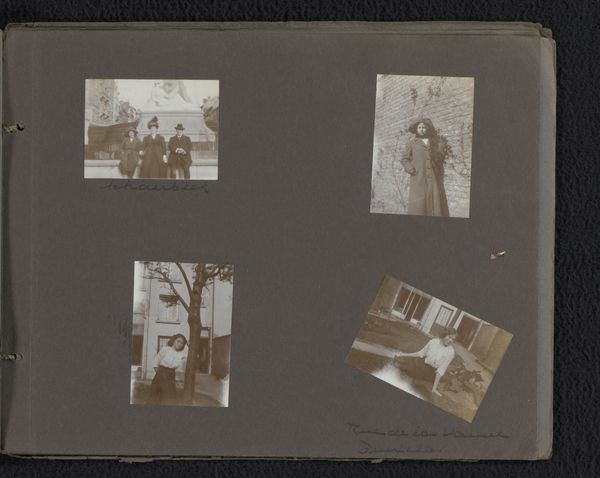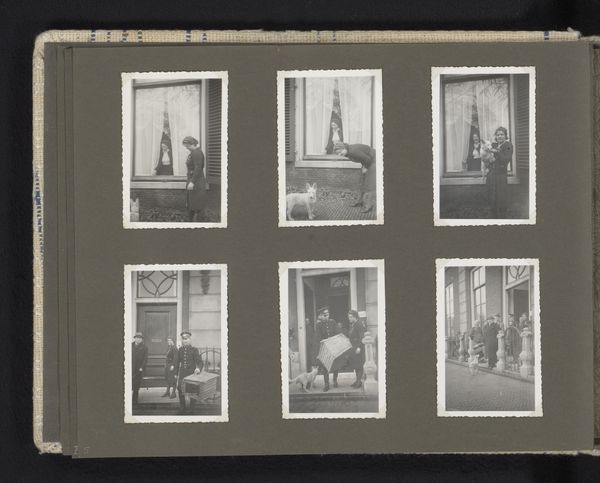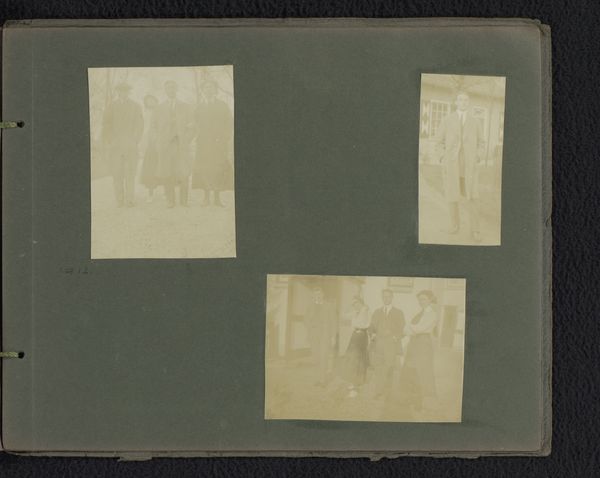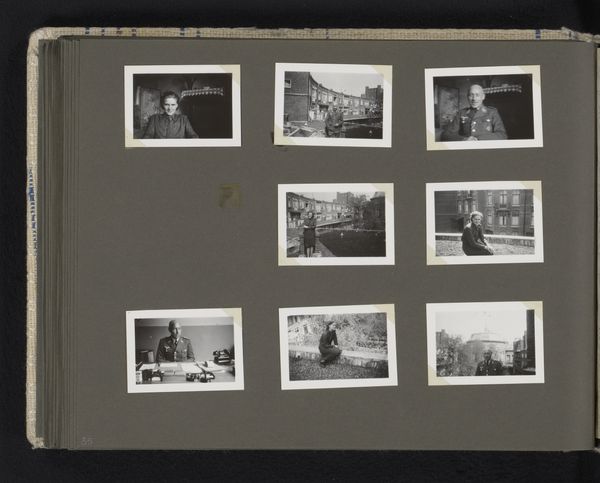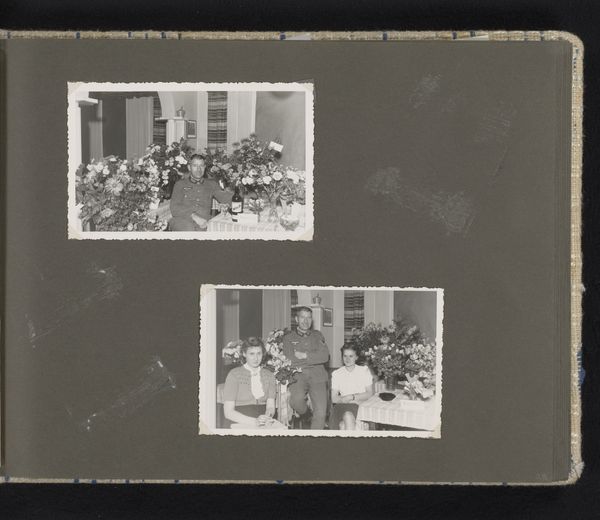
print, photography
#
aged paper
#
still-life-photography
#
toned paper
#
homemade paper
#
medieval
#
parchment
#
paperlike
# print
#
sketch book
#
photography
#
personal sketchbook
#
neutral brown palette
#
genre-painting
#
paper medium
#
historical font
Dimensions: height 90 mm, width 140 mm, height 210 mm, width 285 mm
Copyright: Rijks Museum: Open Domain
Editor: This photograph showcases "Prentbriefkaarten van schilderijen van de heilige Liduina van Schiedam," dating between 1925 and 1933, attributed to Hrs. Rebers. What strikes me is the juxtaposition of scenes – one of worship and the other of daily life. How does this collection of postcards reflect its era and the prevailing social attitudes? Curator: That's a great observation. These postcards, presenting paintings of Saint Liduina, served not only as religious reminders but also as carriers of cultural values. The interwar period in the Netherlands witnessed a resurgence of religious fervor intertwined with nationalist sentiment. These images helped construct a narrative of Dutch identity rooted in faith and local history. Consider the political landscape: did these images offer solace or reinforce specific social hierarchies? Editor: That's fascinating. So, it's more than just religious imagery; it's about creating and reinforcing a national identity. Do you think the choice of photography as a medium played a role in disseminating these ideas? Curator: Absolutely. Photography democratized art. By reproducing paintings as postcards, these images became widely accessible. This accessibility was crucial in shaping public perception of Saint Liduina and her significance in Dutch society. Moreover, photography lends an air of authenticity, implying that these events were real and relevant to contemporary life. How might this relate to the ongoing debates about representation in public life? Editor: That's a powerful point. It highlights how art, even in a seemingly simple form like a postcard, can be a tool for shaping collective memory and social norms. I'll never look at a postcard the same way again. Curator: Exactly! It reveals the intricate ways in which art functions as a reflection of—and an influence on—the society that creates and consumes it. Thanks for a stimulating exchange.
Comments
No comments
Be the first to comment and join the conversation on the ultimate creative platform.
